Even in June we have folks come in to get planting advice for their garden beds and pots. It’s never too late to plant something! Here are a few ideas for your summer planters.

Keep in mind you don’t have to make fancy plant combinations if you feel unsure of yourself. You can also choose to use just one kind of plant in a planter.
The bottom line? Do whatever you feel works for you and your landscape. The staff at Oak Street Garden Shop and I enjoy putting together combinations of plants though, so here are a few examples of that type of planting.
The wire plant stand shown in the first two pictures lives at a local restaurant, receives lot of sun, and is well tended. It was first lined with a thick layer of green sheet moss, then soil and Osmocote were added (We mix in this slow release fertilizer to all of our plantings.), and finally plants were positioned.
 Because this needs to show up in the evening as well as during the day, the color scheme is white and silver with a touch of blue. It’s sited in front of a window and needs to look good all around as patrons also view it from inside the restaurant.
Because this needs to show up in the evening as well as during the day, the color scheme is white and silver with a touch of blue. It’s sited in front of a window and needs to look good all around as patrons also view it from inside the restaurant.
Blue salvia and silver germander will give height to this planting and spiky blooms, silver artemesia, sun tolerant caladiums, and an airy white euphorbia will add fullness, while a trailing artemesia, spreading angelonia, helichrysum, and silver dichondra will spill out the front.
The next example is simpler since the container, a bowl made out of hypertuffa, is smaller. Again, the plants chosen will work in the sun if care is taken to keep the contents watered. Our advice, unless it rains, is to water each morning, thoroughly in the heat of summer, and check the planting again each afternoon.
Three types of plants fill this bowl: spreading angelonia, ornamental oregano, and trailing pentas. Each of these will either spread out or trail, so the overall look will be of a mounding planting. Each of these has a different shape bloom, so there will be contrast in form as well as color of foliage or flower.
The final example is an intensively planted, heavy glazed container that a customer brought in to be planted for a wedding party. Her color scheme was white, pink, and purple, and some variegated and silver foliage was used as well.
 Because this needed to be intensively planted to look “grown out” immediately, maintenance will be important, and plants will need to be cut back periodically and groomed often. The planter sits against a wall in hot sun, so the view is 3/4 around.
Because this needed to be intensively planted to look “grown out” immediately, maintenance will be important, and plants will need to be cut back periodically and groomed often. The planter sits against a wall in hot sun, so the view is 3/4 around.
Here Iris pallida was the starting point, then silver artemesia, silver germander, upright and spreading angelonia, and trailing plants of both purple and white scaevola were added to complete the planting. Again, there’s contrast in foliage color, bloom form, and growth habit.
The mixed planting combinations shown here could just as easily work in a sunny garden bed too.
Experiment with new plants you might not be familiar with, try different combinations, whether they’re all in the same pot, one plant type in a container. or in the ground. You just might find a new favorite!
Plants used in these containers include:
Sun tolerant caladiums: There are many out there. The sun caladiums generally have lance shaped leaves. Blue salvia: Again, look for salvias that grow between 12″ and 18″ the size best for most mid-size container gardens. Euphorbia: There are many, and they all offer an airy growth habit with small white blooms. You can’t go wrong with any of them! Helichrysum ‘Silver Star‘: This is an excellent choice for southern gardeners, usually available only early in the season. Doesn’t “melt out” like most other helichrysums do for us.
Silver dichondra: Don’t let it’s skimpy appearance in the pot fool you. This is one of the best choices to create a silvery waterfall of coin shaped leaves to trail out of containers in the sun, and it loves the heat too! Angelonia: Sometimes referred to as summer snapdragon because of it’s bloom shape. Angelonia comes in an upright form perfect for the center of containers or in garden beds and as a spreading plant, more lax and outward growing.
Artemesia: Good for a silver foliage element. ‘Powis Castle’ is big and billowy, ‘Silver Brocade’ spreads out and down. Silver germander: A lovely upright growing plant used for foliage texture and color. An excellent plant to add structure to plantings, though it can be difficult to find.
Pentas: A workhorse for us. They’re available in an upright form, useful for adding height in containers, and now there’s also a trailing variety. They do require deadheading to perform their best. Ornamental oregano: Another that can be difficult to find, but if you can, the trailing habit and pink bloom bracts make it a winner.
Scaevola: This spiller comes in a range of colors: white, pink, blue, or purple, so it can be used with any color scheme. Clip it back periodically to keep it from getting ragged. Its other name is fan flower because of the charming fan shaped blooms.
Iris pallida: A striking iris, with either yellow (‘Aurea’) or white (‘Variegata’) variegated leaves, it prefers sun and dryish soil. Lovely light purple blooms appear in early spring.
A few more good choices not used here include:
Coleus: With their colorful leaves they brighten shady areas, but there are also many sun tolerant varieties as well. Sunpatiens: Provide plenty of water if you place them in full sun. Begonias: There are many excellent varieties out there including ‘Dragonwing’, ‘Big Leaf’, and others. It’s not your Grandma’s begonia world any more! Calibrachoa: Also known as million bells, these diminutive petunia look-alikes spill from containers with every color imagineable. Purslane: Colorful blooms close in the late afternoon on succulent, drought tolerant plants. Lantana: An old workhorse, new varieties are more compact and extremely floriferous.


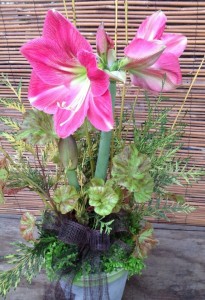





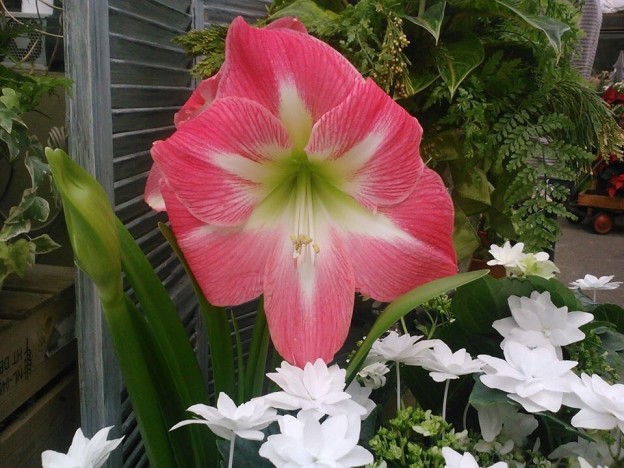






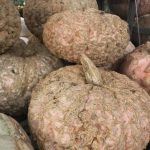
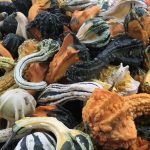














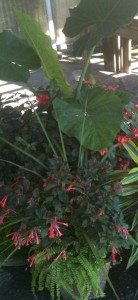









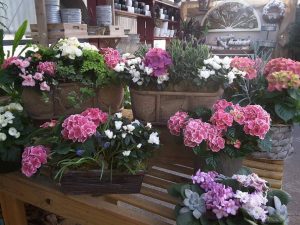


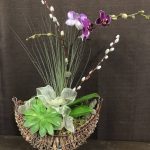








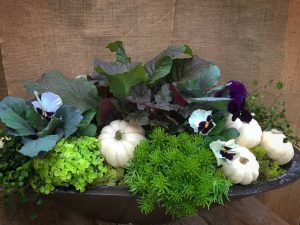




















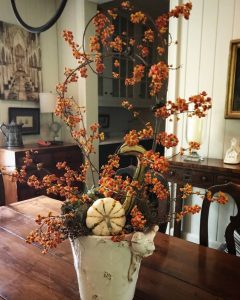
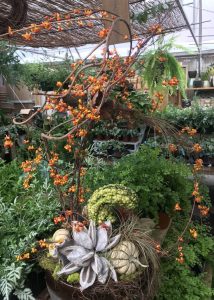












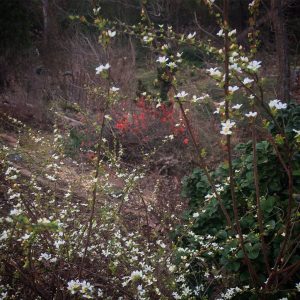





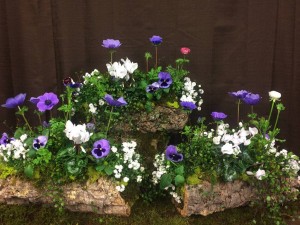




















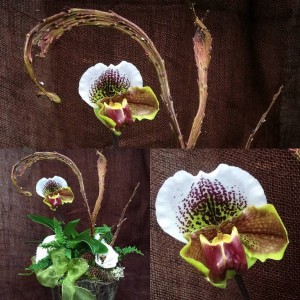





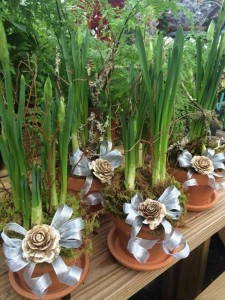


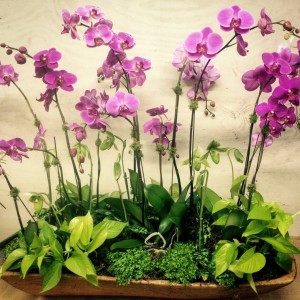






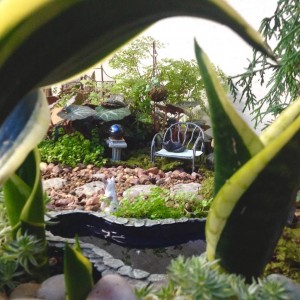














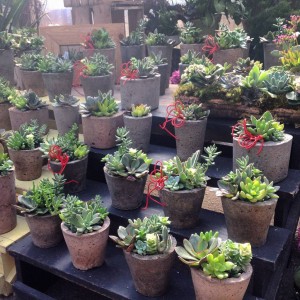

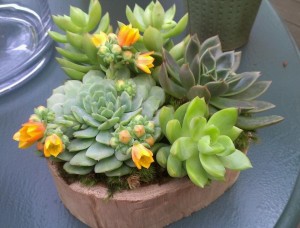








 Just a quick post to point out the many beautiful flowers in the greenhouse. Our baskets and containers are one of a kind…special creations custom made for each order.
Just a quick post to point out the many beautiful flowers in the greenhouse. Our baskets and containers are one of a kind…special creations custom made for each order.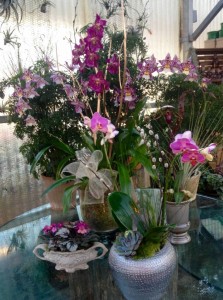

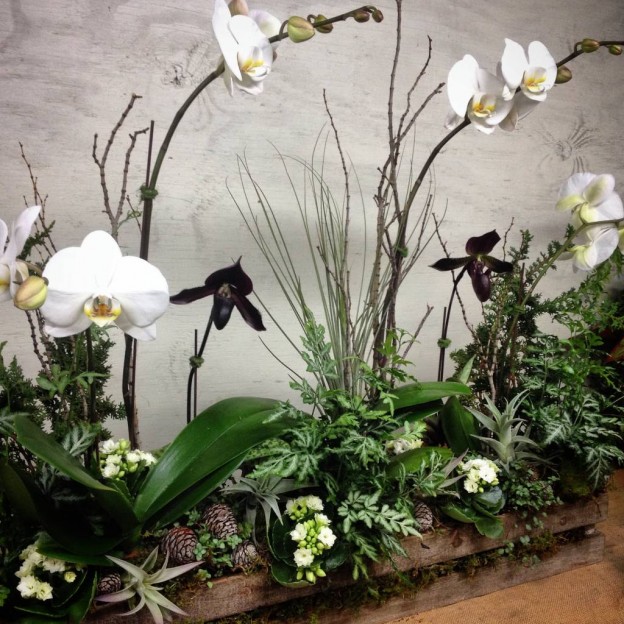








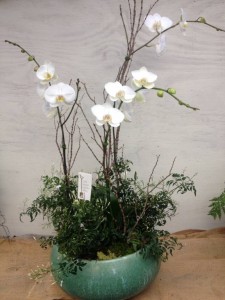
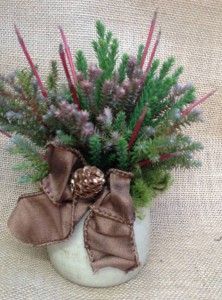










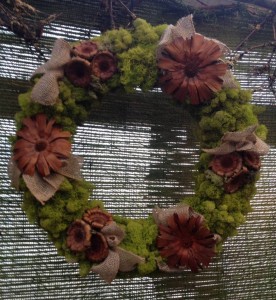







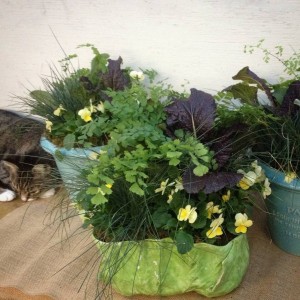





 The wreaths are just about 10″ in diameter and can just as easily be laid flat on a table and made part of a holiday tablescape as hung. Though they’re beautiful just as they are, adding other elements is easy to do. The one shown here was “dressed up” with small loops of a pretty, sheer ribbon, tiny pine cones, and small tufts of real cotton.
The wreaths are just about 10″ in diameter and can just as easily be laid flat on a table and made part of a holiday tablescape as hung. Though they’re beautiful just as they are, adding other elements is easy to do. The one shown here was “dressed up” with small loops of a pretty, sheer ribbon, tiny pine cones, and small tufts of real cotton.

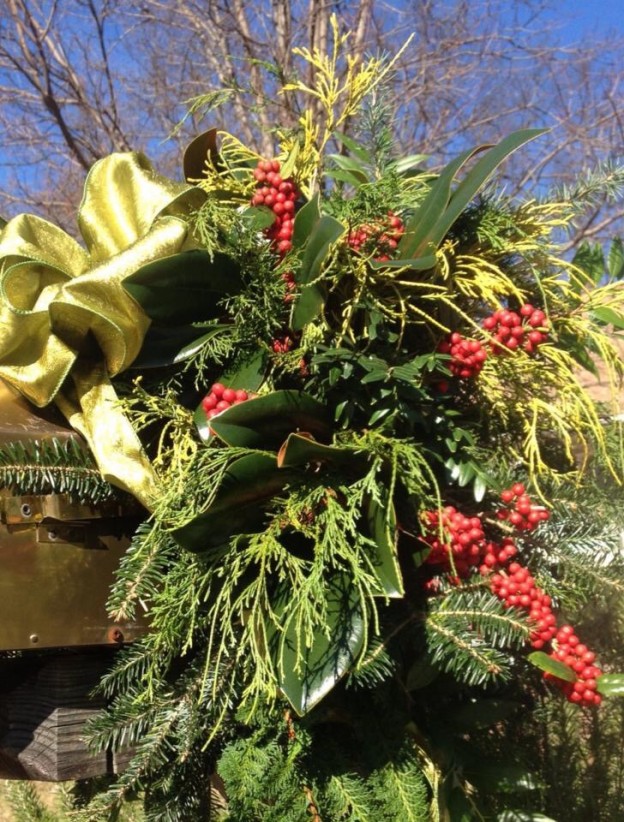
 I have to confess, where I grew up, mailboxes were at the houses, either as a mail slot in the door or physically attached to the outside of the home, and only folks in the country had mailboxes on a post at the street. Now this was actually a very good thing since it saved having to walk outside each day to get the mail, especially on extra cold or very snowy days. Of course, there was always a wreath, and garland with bows, and evergreen bunches in frozen pots.
I have to confess, where I grew up, mailboxes were at the houses, either as a mail slot in the door or physically attached to the outside of the home, and only folks in the country had mailboxes on a post at the street. Now this was actually a very good thing since it saved having to walk outside each day to get the mail, especially on extra cold or very snowy days. Of course, there was always a wreath, and garland with bows, and evergreen bunches in frozen pots.


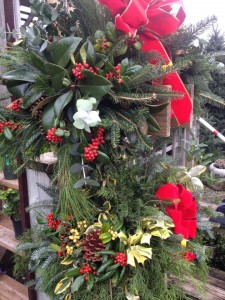


 Someone who worked for us many years ago called from North Carolina to order an orchid for her mother’s birthday. She likes succulents too; so a double stemmed phalaenopsis and a lady slipper orchid were paired in a container and succulents nestled at the base. The addition of angelvine and a touch of brown ribbon complete the design.
Someone who worked for us many years ago called from North Carolina to order an orchid for her mother’s birthday. She likes succulents too; so a double stemmed phalaenopsis and a lady slipper orchid were paired in a container and succulents nestled at the base. The addition of angelvine and a touch of brown ribbon complete the design.

 This is just a sampling of the early fall things we’ve been creating! Since we’re always searching for new ideas and ways to make our arrangements more interesting and unique, who knows what we’ll come up with next…
This is just a sampling of the early fall things we’ve been creating! Since we’re always searching for new ideas and ways to make our arrangements more interesting and unique, who knows what we’ll come up with next…